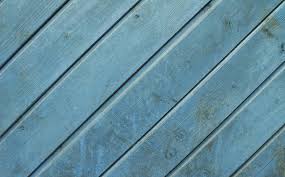 Composite decking disposal is totally different from traditional wood. In fact, it’s so different, the disposal or rather, recycling process is entirely something else. This is due to the fact that composite isn’t wood. And, it functions differently than its pure wood counterpart, which can mean early replacement becomes necessary. Also, it’s more expensive to replace and it doesn’t not fetch a strong ROI. Composite returns 68 percent of its cost while traditional wood returns 80.5 percent.
Composite decking disposal is totally different from traditional wood. In fact, it’s so different, the disposal or rather, recycling process is entirely something else. This is due to the fact that composite isn’t wood. And, it functions differently than its pure wood counterpart, which can mean early replacement becomes necessary. Also, it’s more expensive to replace and it doesn’t not fetch a strong ROI. Composite returns 68 percent of its cost while traditional wood returns 80.5 percent.
Why You can’t Throw Out Composite Decking
Now, before we get into the actual replacement and materials disposal, let’s explore just why it’s so difficult to get rid of composite. Well, as mentioned above, it isn’t all wood. Though a high percentage is made from sawdust and wood waste, it’s also made up of plastics and more. Therefore, it can’t be disposed of in the same manner. Composite must be recycled. Unfortunately, this means a bit more work for homeowners who need to scrap their composite decks.
Composite decking was first introduced in the 90s by Trex who developed the initial idea of a composite made from 95% recycled sawdust waste and used plastic bottles (HDPE) where the wood fibers act as reinforcement for the recycled plastic. They initially offered a very basic product in a few colors that were easily achieved. Overtime composite wood has developed into a huge industry with a variety of new products that profess to look like natural wood. —Green Home Guide.com
Although composite is very strong but it’s not permanent or impervious to damage. Actually it is more susceptible to mechanical and other types of damage. This means composite can swell, it can mold or mildew, it can warp, or fail.
Bixler Composite Decking Disposal Made Easy
When composite must be replaced, it’s time to disassemble the deck. Of course, you must deal with the discarded materials. Here’s a helpful overview of the composite decking disposal process you should know:
- Clear the deck. Just like any deck replacement, the job begins with clearing the fixture of everything. Remove any furniture, decor, and anything else. Put it all out-of-the-way so you have ample room to work.
- Pull up the boards. Next, you must pull up the composite boards, one-by-one. Start at an outer edge and work your way in, toward the house. (Be sure to lock the door or post a sign so no one walks out onto the deck while it’s being taken down.)
- Take it to a recycling facility. After removing the composite boards, you can disassemble the frame and then haul it to a recycling facility.
- Call a junk hauling service to pick it up. If you don’t have a truck and trailer to haul away the materials, you can simply bring in a junk removal service to do it for you.
If you need composite decking disposal and removal, just phone 800-433-1094 or visit Pro Junk Dispatch.


